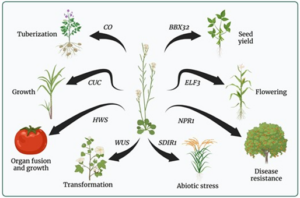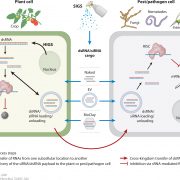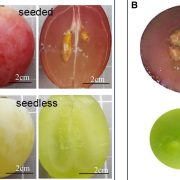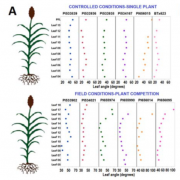Review: Celebrating 150 years of Arabidopsis genetics
 The first known report of an Arabidopsis thaliana mutant appeared approximately 150 years ago (1873). In the intervening years, Arabidopsis has become an essential model for plant genetic research, driving groundbreaking discoveries across multiple disciplines. In a recent review, Yaschenko et al. provide a broad and succinct examination of how Arabidopsis has contributed more than its weight in scientific advancement. Its small genome, short life cycle, and ease of genetic manipulation have made it an ideal model organism, leading to major advancements in understanding plant growth, development, disease resistance, and stress tolerance. The ability to translate these findings to economically important crops has kept it as an essential tool in addressing agricultural challenges facing the world. Beyond plant biology, Arabidopsis has contributed greatly to medical research by identifying orthologs linked to human diseases, aiding in the discovery of genetic markers and biological processes relevant to potential treatments. The wealth of genomic data from Arabidopsis has also advanced biotechnology, leading to the development of tools like inducible expression systems, optogenetics, and protein interaction regulators. As research continues to evolve, Arabidopsis remains an ever-important model organism, offering critical insights into fundamental biological mechanisms that have applications beyond plant biology. (Summary by Xavier Ozowara [email protected]). Plant Cell 10.1093/plcell/koae065
The first known report of an Arabidopsis thaliana mutant appeared approximately 150 years ago (1873). In the intervening years, Arabidopsis has become an essential model for plant genetic research, driving groundbreaking discoveries across multiple disciplines. In a recent review, Yaschenko et al. provide a broad and succinct examination of how Arabidopsis has contributed more than its weight in scientific advancement. Its small genome, short life cycle, and ease of genetic manipulation have made it an ideal model organism, leading to major advancements in understanding plant growth, development, disease resistance, and stress tolerance. The ability to translate these findings to economically important crops has kept it as an essential tool in addressing agricultural challenges facing the world. Beyond plant biology, Arabidopsis has contributed greatly to medical research by identifying orthologs linked to human diseases, aiding in the discovery of genetic markers and biological processes relevant to potential treatments. The wealth of genomic data from Arabidopsis has also advanced biotechnology, leading to the development of tools like inducible expression systems, optogenetics, and protein interaction regulators. As research continues to evolve, Arabidopsis remains an ever-important model organism, offering critical insights into fundamental biological mechanisms that have applications beyond plant biology. (Summary by Xavier Ozowara [email protected]). Plant Cell 10.1093/plcell/koae065









